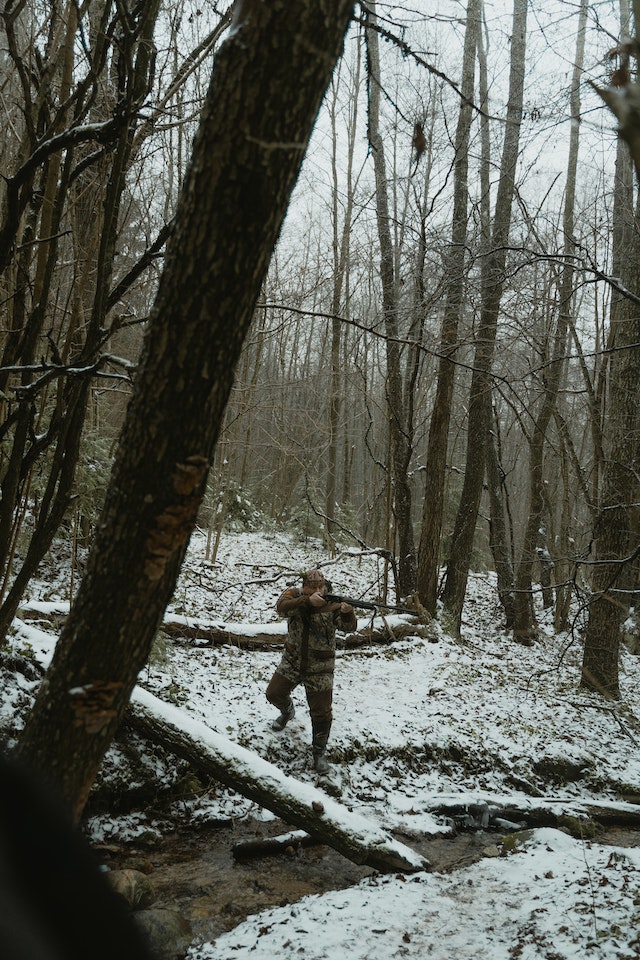Are you enthusiastic about the outdoors and interested in hunting or deer farming? Hunting is a thrilling and difficult pastime that takes talent, patience, and the proper gear, and deer farming may be the ideal choice if you’re searching for a lucrative business opportunity. This guide will cover all you need to know about hunting and deer farming.
Hunting
Hunting is pursuing, capturing, and killing wild animals for food, sport, or other purposes. It’s been a part of human culture and survival for thousands of years, and many people still enjoy it as a recreational activity today. Some of the fundamentals of hunting are discussed below.
Types of Hunting
There are various types of hunting, including big game hunting, small game hunting, and waterfowl. Big game hunting is the pursuit of large creatures such as deer, elk, and moose, whereas small game hunting entails the pursuit of smaller species such as rabbits, squirrels, and raccoons. Waterfowl hunting consists of the pursuit of ducks, geese, and other waterfowl. Each sort of hunting calls for a unique set of skills and equipment.
Hunting Techniques
There are several hunting techniques, including still hunting, stalking, and using a tree stand. Still, hunting involves slowly and quietly moving through the woods, scanning for signs of game. Stalking involves stealthily following the game until it can be taken with a shot. A tree stand is a platform hunters can use to observe the game from above, allowing them to remain hidden while waiting for a shot.
Hunting Equipment
Hunting equipment can vary depending on the hunting type. Basic equipment includes a firearm or bow and arrow, ammunition or arrows, and appropriate clothing and footwear. Other equipment may include binoculars or a spotting scope for spotting games from a distance, scent blockers to mask the human odor, and game calls to lure animals closer.
Deer Farming
Deer farming is the practice of raising deer for a variety of purposes, such as meat, antlers, hides, and breeding stock. Deer farming is a growing industry that provides a sustainable source of income for many farmers around the world.
Types of Deer Farms
There are two main types of deer farms: breeding farms and venison farms. Breeding farms focus on raising deer for breeding purposes, producing offspring that can be sold to other deer farmers. Venison farms, on the other hand, raise deer for their meat, which can be sold to restaurants, markets, or individual customers.
Starting a Deer Farm
Those interested in starting a deer farm may begin by researching local laws and regulations, obtaining necessary permits and licenses, and acquiring suitable land and facilities for the deer. The next step would be to choose the type of deer to raise and to develop a plan for herd management, including feeding and nutrition, disease prevention and control, and breeding and reproduction.
Deer Nutrition and Health
Deers require a balanced diet that contains high-quality grass, protein, and minerals. Farmers can also augment their diet with commercial feed designed specifically for deer. Providing deer with clean water, enough shelter, and frequent veterinarian treatment is critical to prevent and treat infections. One common method of providing supplemental nutrition to deer is through the use of a deer feeder, which can distribute food to the herd in a controlled manner.
Deer Handling and Management
Deer handling and management is a critical aspect of deer farming and involves a range of activities aimed at maintaining the health and well-being of the deer herd. Deer handling and management include the following.
Herd Management
Effective herd management is crucial for the success of a deer farm. This includes monitoring herd health and behavior, providing adequate nutrition, and water, and maintaining clean, sanitary living conditions. Farmers must also manage breeding and reproduction to ensure a healthy and genetically diverse herd.
Handling Techniques
Deer farmers use gentle handling techniques to minimize stress on the animals. This includes using calm voices, avoiding sudden movements or loud noises, and handling the deer in a way that is safe for both the animal and the handler. Farmers may also use equipment such as squeeze chutes or handling pens to safely handle and restrain the deer for veterinary care or other purposes.
Breeding and Reproduction
Breeding and reproduction are crucial parts of deer farming. Farmers must pick an appropriate breeding stock and regulate breeding to ensure the herd’s health and genetic diversity. Farmers may employ artificial insemination to manage to breed and assure effective reproduction during the deer’s breeding season. It is crucial to monitor each deer for pregnancy and care for newborn fawns accordingly.
Conclusion
In conclusion, hunting and deer farming is exciting and challenging activities requiring dedication, knowledge, and hard work. By following the advice and techniques outlined in this guide, you’ll be well on your way to becoming a skilled hunter or successful deer farmer.
